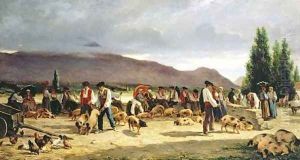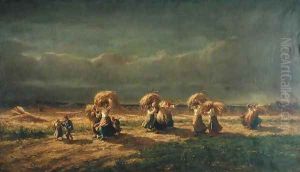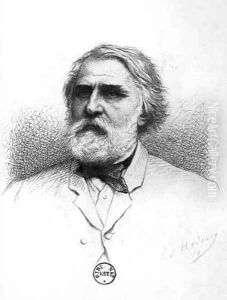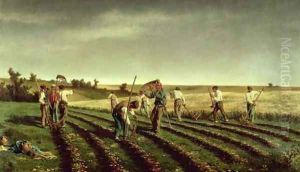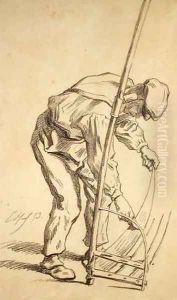Pierre Edmond Alexandre Hedouin Paintings
Pierre Edmond Alexandre Hédouin was a French painter, engraver, and illustrator born on March 27, 1820, in Paris, France. His artistic journey began under the guidance of his uncle, Rémi-Fursy Hédouin, who was a printmaker. Pierre Hédouin's early works show the influence of this training and his adeptness in the medium of engraving. He further honed his skills by studying at the École des Beaux-Arts in Paris, where he was a pupil of Michel Martin Drolling, a classical history painter, and Léon Cogniet.
Hédouin's works exhibited a classical sensibility, often drawing upon historical and mythological themes. He was also inspired by literature and frequently created illustrations for books. His engravings and paintings reflect a keen understanding of the human form and a dedication to detailed, narrative-driven composition. This narrative quality in his art was well-suited to the illustrative work he did for authors such as Edgar Allan Poe, for whom he created images that captured the atmospheric and often macabre essence of Poe's writings.
Although not as widely recognized today as some of his contemporaries, Hédouin was an active participant in the Parisian art world of his time. He regularly exhibited at the Paris Salon, the official art exhibition of the Académie des Beaux-Arts in Paris. His works were well received, and he gained a reputation for his engravings and his skill as a draftsman.
Pierre Edmond Alexandre Hédouin's career spanned much of the 19th century, a period that saw significant changes in the art world, including the rise of movements like Realism and Impressionism. While Hédouin remained largely traditional in his approach, his works did reflect a certain modernity in their composition and thematic choices. He continued to create art until his death on May 11, 1889, in Paris. Hédouin's legacy lives on through his contributions to French art, particularly in the field of engraving and illustration, where his technical skill and artistic sensibility continue to be appreciated by art historians and collectors.
